I'll start with a clerihew and a stock photo (::groan::).
Sir Humphrey DavySodium being one component of table salt, chemically, sodium chloride or NaCl.
abominated gravy.
He lived in the odium
of having discovered sodium.
Generally when I make soup stock, cauldron work and/or the pressure cooker is involved. I'm not a big fan of using commercially prepared bouillon cubes or mixes because the flavors seem fresher and truer and I can control the amount of salt and other additives when I make homemade stock. By contrast DH loves bouillon because he loves its salt and convenience. Shrug. (The photo below shows the mise en place, or culinary setup, for chicken bone broth. I dunno why I didn't take a pic of soup base in progress or, for that matter, why I took this food prep photo. I have enough trouble remembering to take fiber WIP photos.)
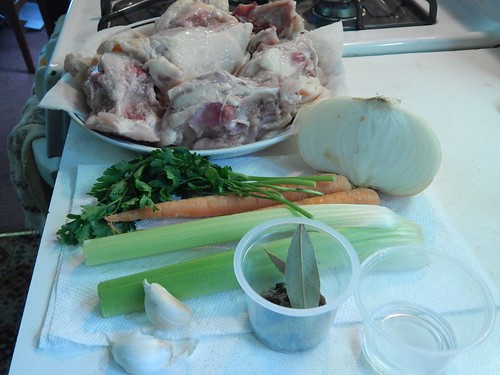
Attempt the first at vegetable soup base was Homemade Vegetable Bouillon. The recipe calls for 7 ounces (200 g) of salt to make one quart (almost one liter) of soup base, which makes 48 quarts of vegetable broth. The recipe yield was spot on. The soup base initially smelled very harsh and bitter, but within a day mellowed. Unfortunately, the resulting broth was so excessively salty, it could be used as an emetic. At least the colorful confetti-like bits of ground-up vegetable grit and the occasional peppercorn look rather festive floating in the pale broth.
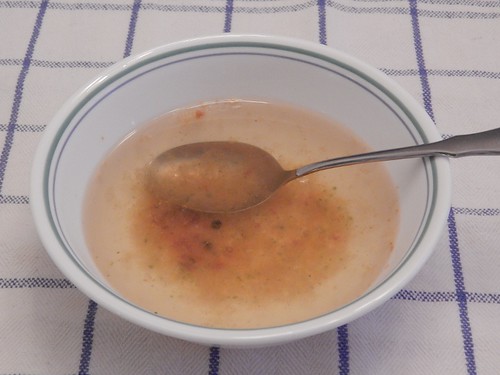
Attempt the second was Vegetable Broth Base. In striking contrast to Attempt the first, this recipe calls for two tablespoons (20 g) of NaCl to make one pint (0.47 liter) of soup base, which makes 8 quarts of vegetable broth. The yield for this recipe was also spot on. This soup base smelled much more appealing than the first, without the bitter odors. The resulting broth is dark and turbid...
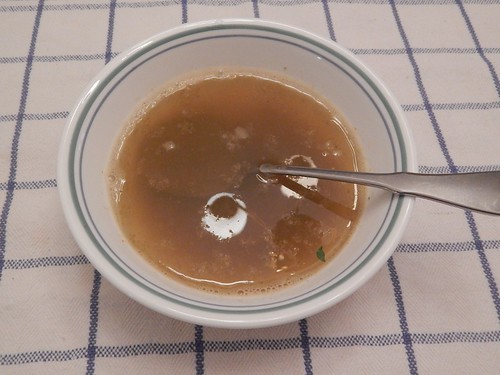
... but when strained as suggested is quite nice in both appearance and taste. The need to strain the broth makes me want to try it in a teabag, an experiment for next time. Out of curiosity I tried steeping the strained sediment a second time as if it were tea leaves, which didn't really work. Not only had all the salt dissolved in the first steeping, but most of the vegetable flavor as well.
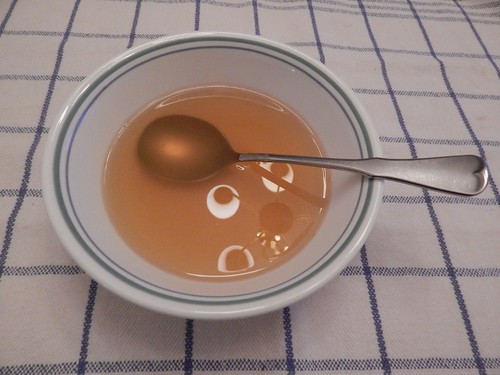
As I want a strong vegetable stock and am not fond of heavily salted food or liquid, the second recipe is the clear winner, YMMV. Both recipes call for a similar amount of vegetables; the first uses far more salt but also makes more broth. When diluted for serving the first broth is 1.6 times saltier than the second and has a less pronounced vegetable flavor. So Attempt the second it is. Were I to make the second recipe again, I'd reduce the amount of soy sauce, which contributes additional sodium (even if one uses low-sodium soy sauce), color, and a fermented soy flavor that to my palate is overly dominant in the final broth. Soy sauce can also be an unexpected source of gluten, which of course is problematic for those following GF diets.
Sad to say, soup base itself is not particularly photogenic. At its best it bears an unfortunate resemblance to the poo emoji (click if you dare). The commercial versions as well. After all, one starts with lovely fresh whole veggies and ends with unlovely paste. Ah, the photographic challenges posed by purees. Speaking of which, I imagine it might be possible to make soup base by hand, but I would never have attempted it without a food processor. The paste is sufficiently salty that it can be stored in the freezer, yet never freeze solid.
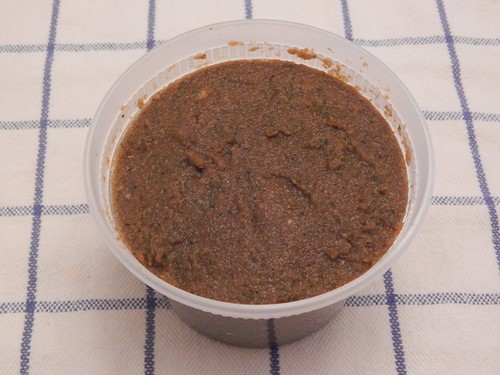
Back in the world of fibery sausage-making, I bought an I-cord mill and have been cranking out I-cord. The gadget is a little finicky about yarn (not too thick, not too fuzzy, not low twist), but works well. Which is good, because science.
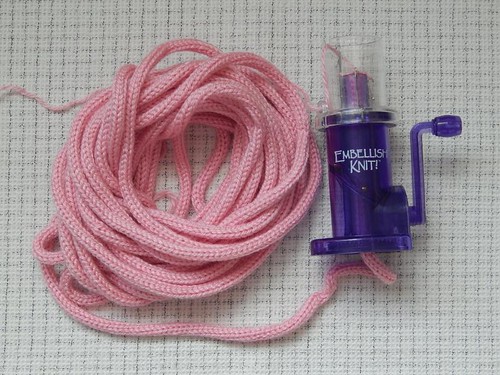
To be continued!
No comments:
Post a Comment